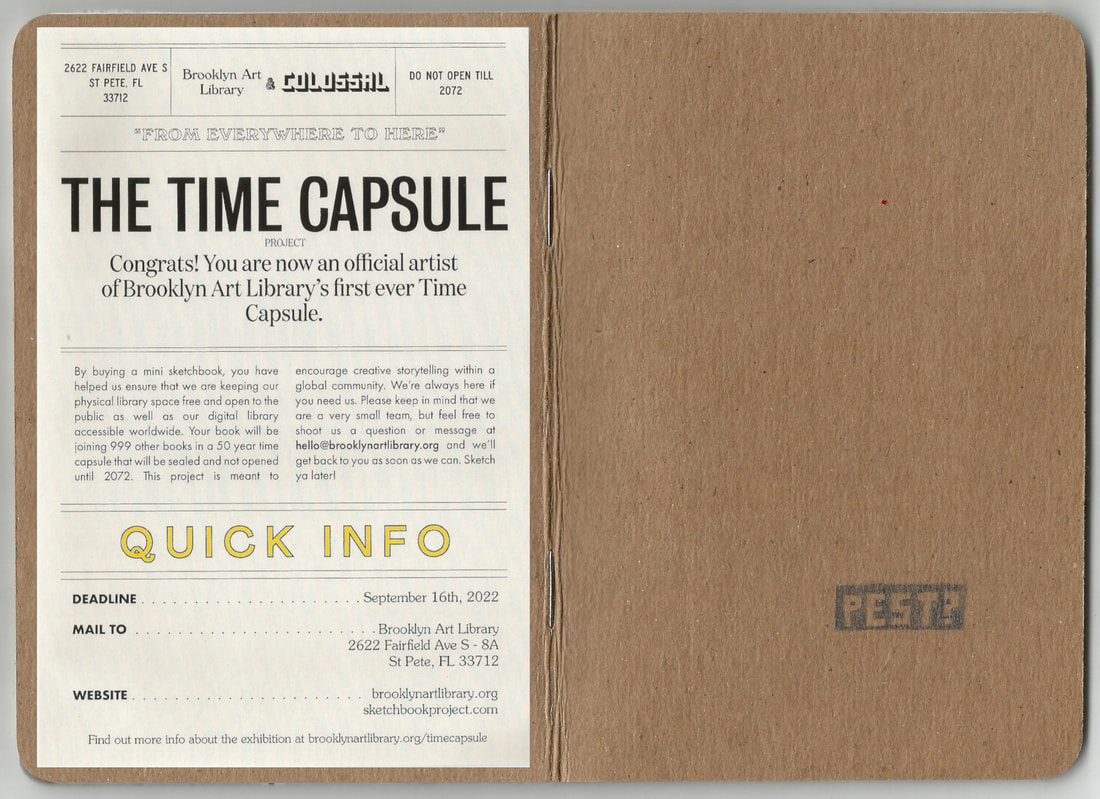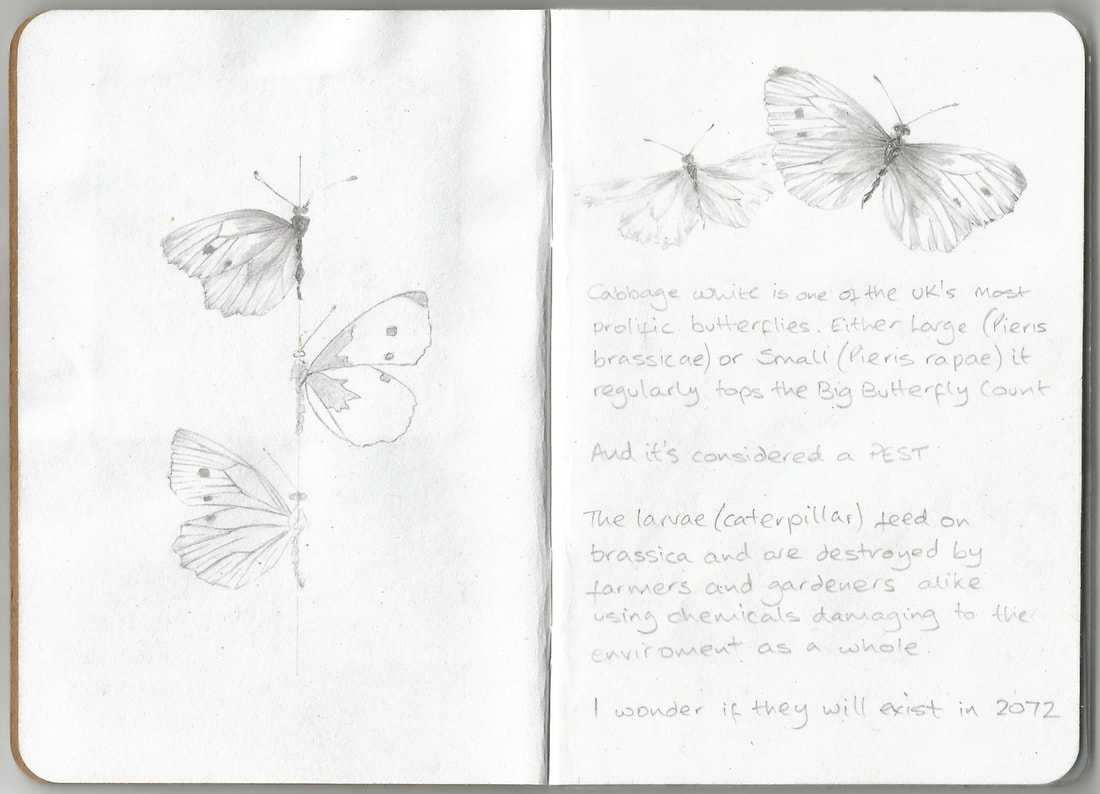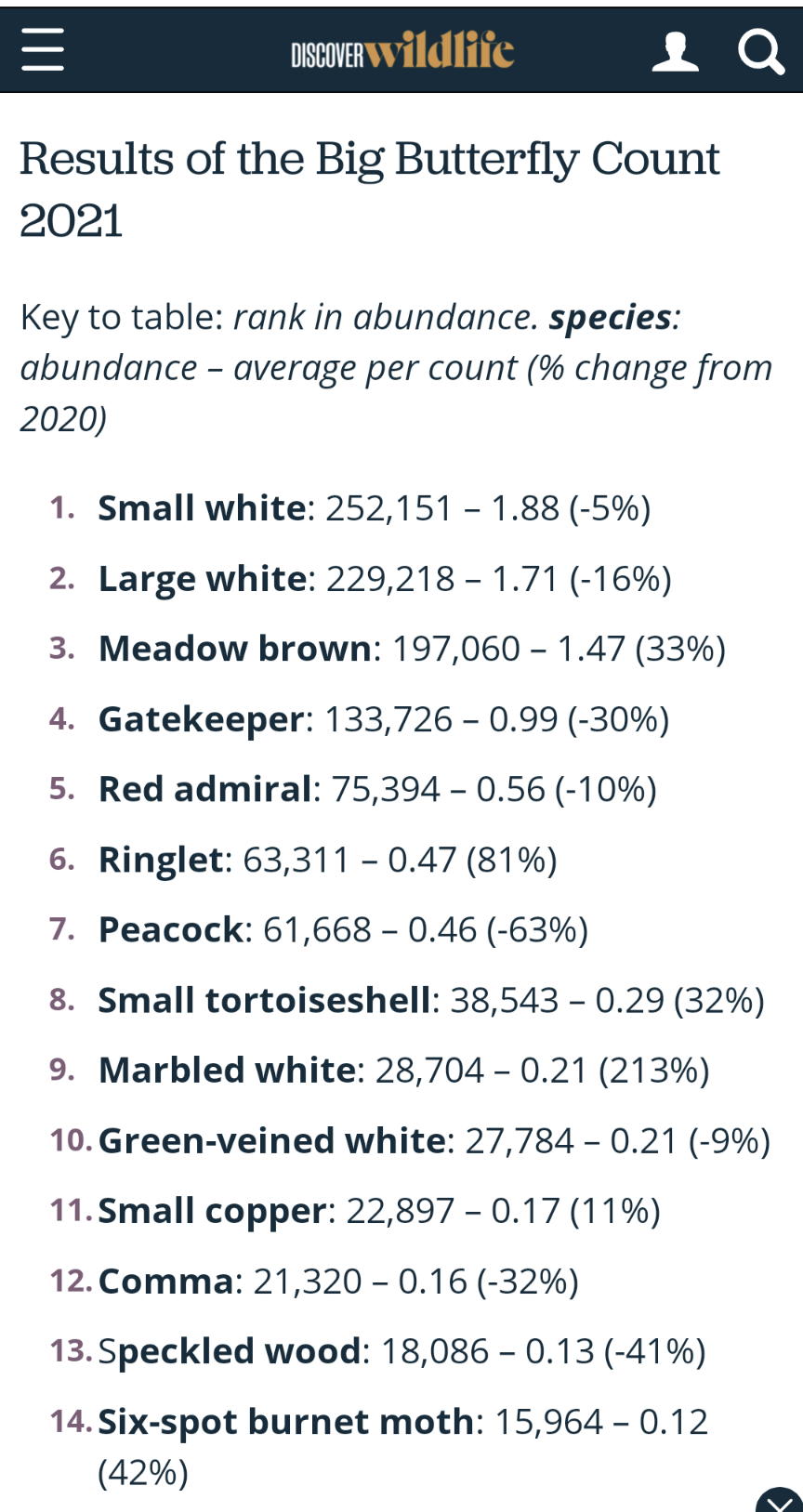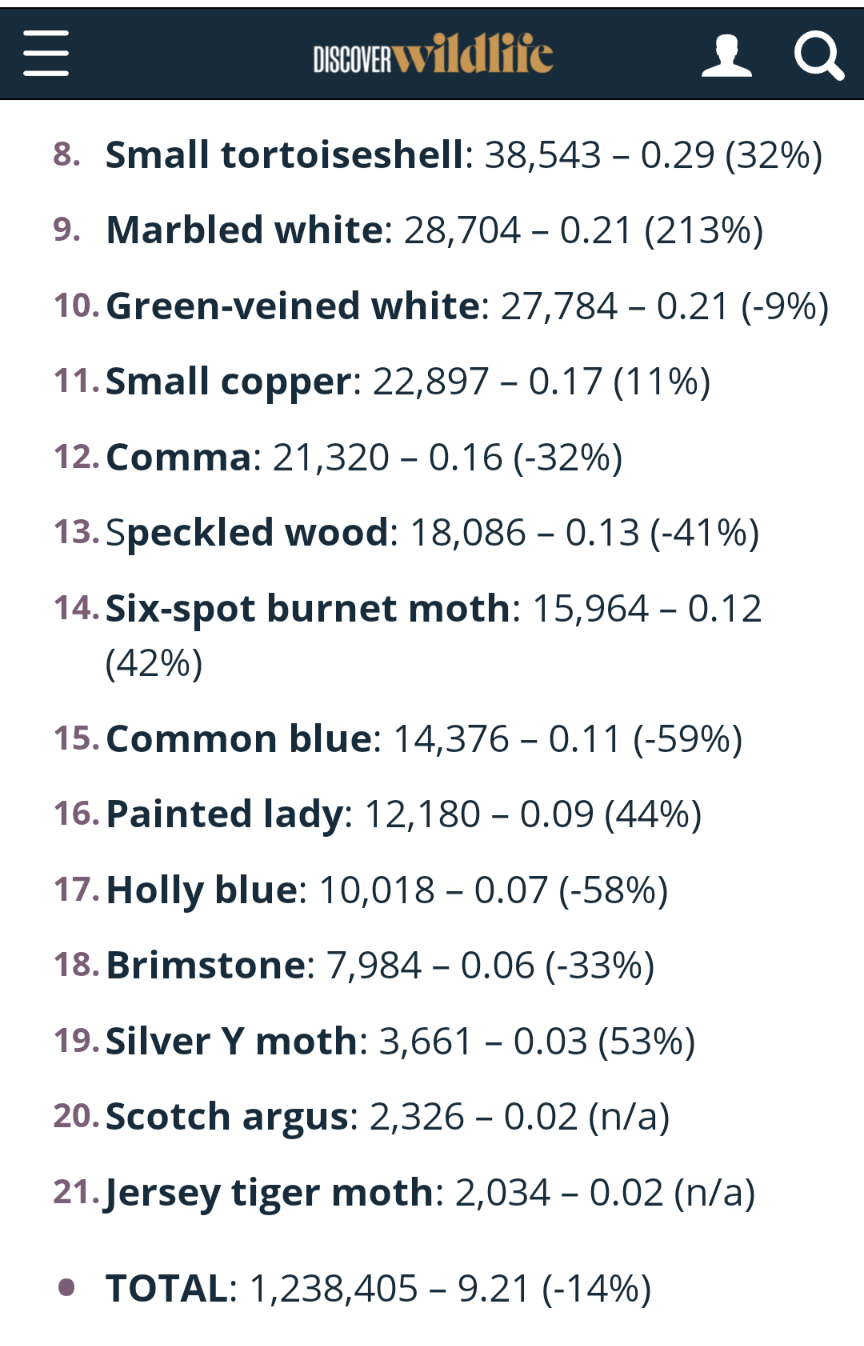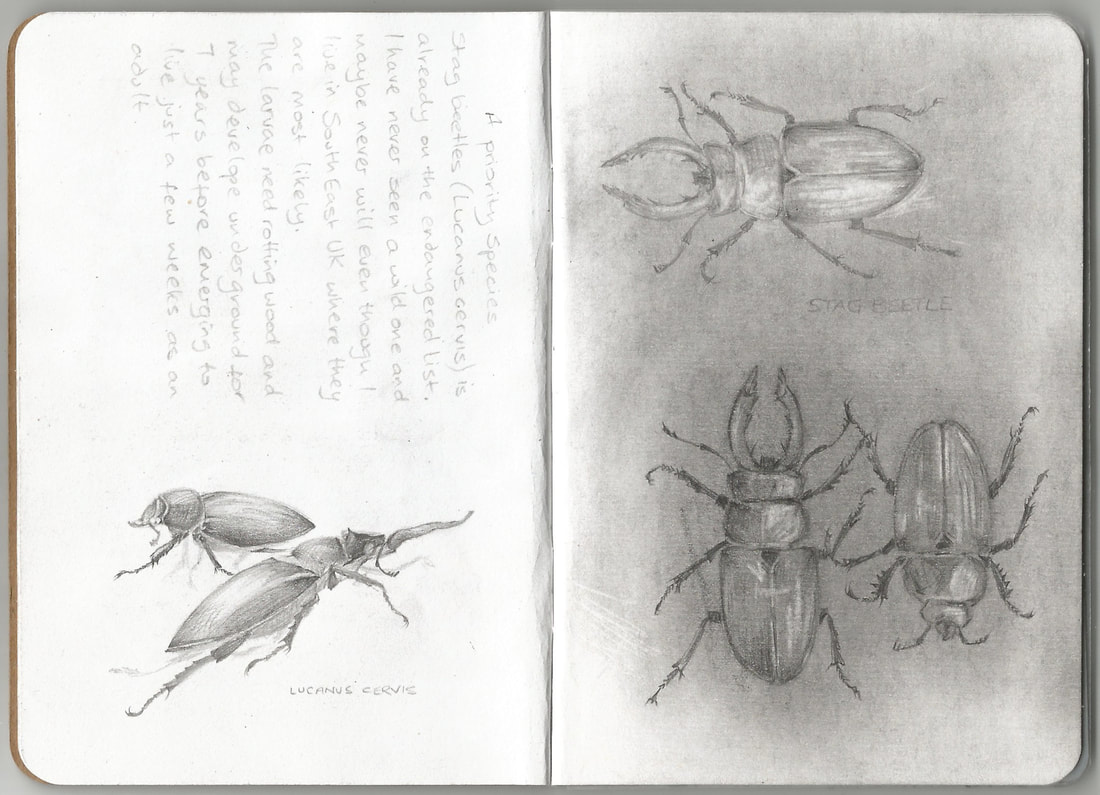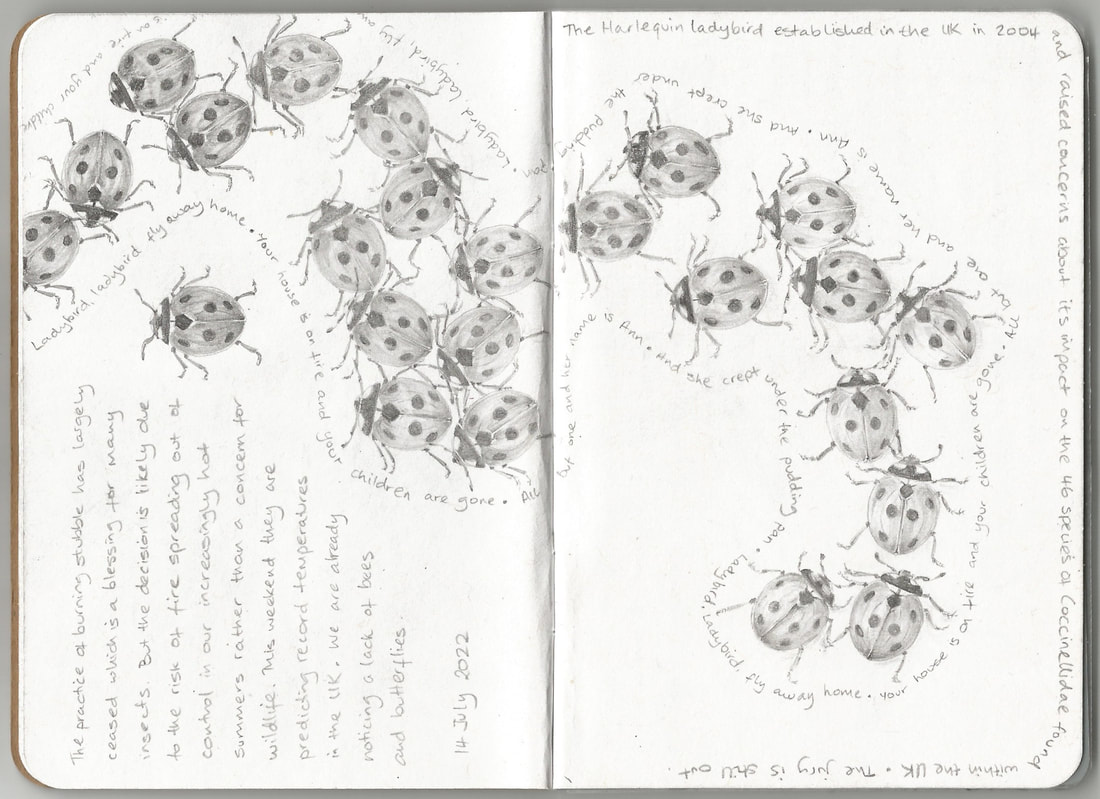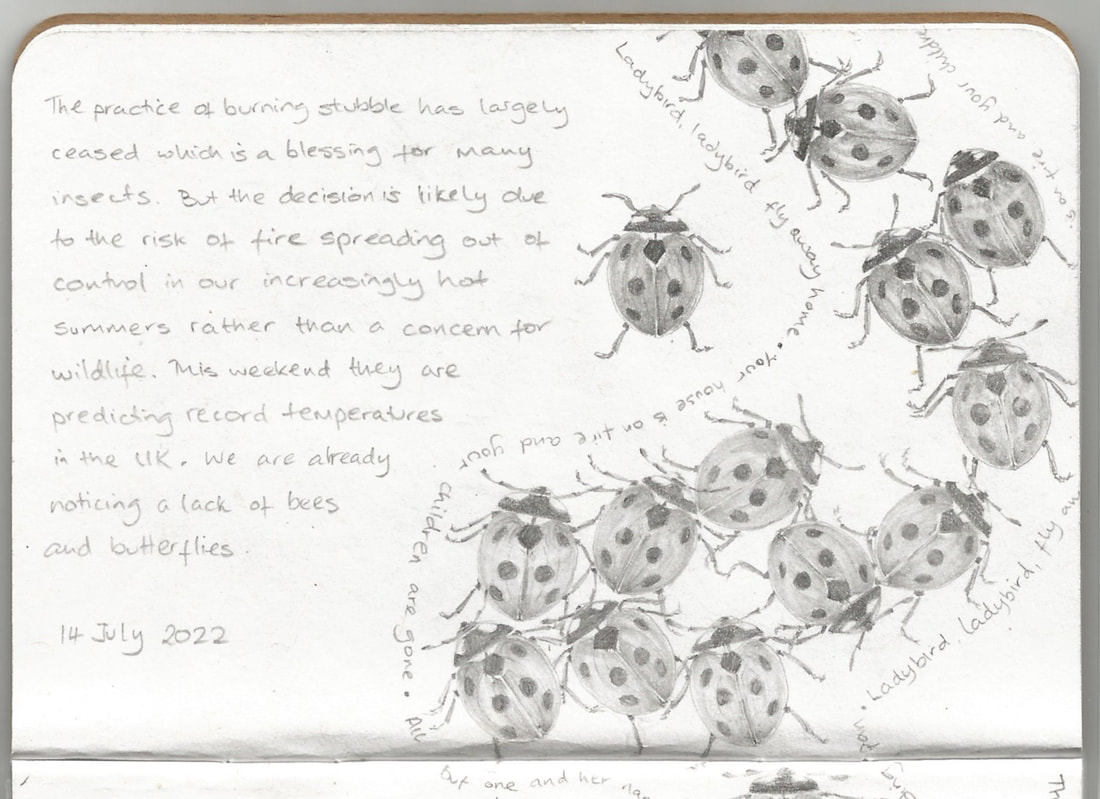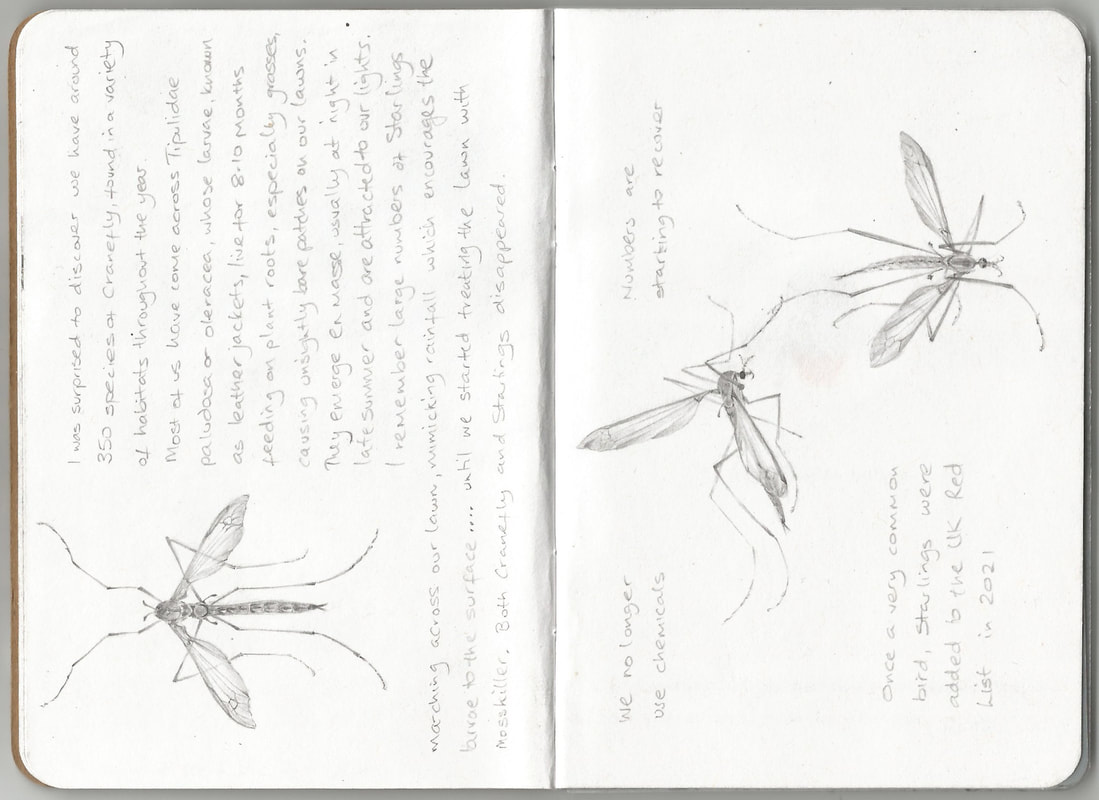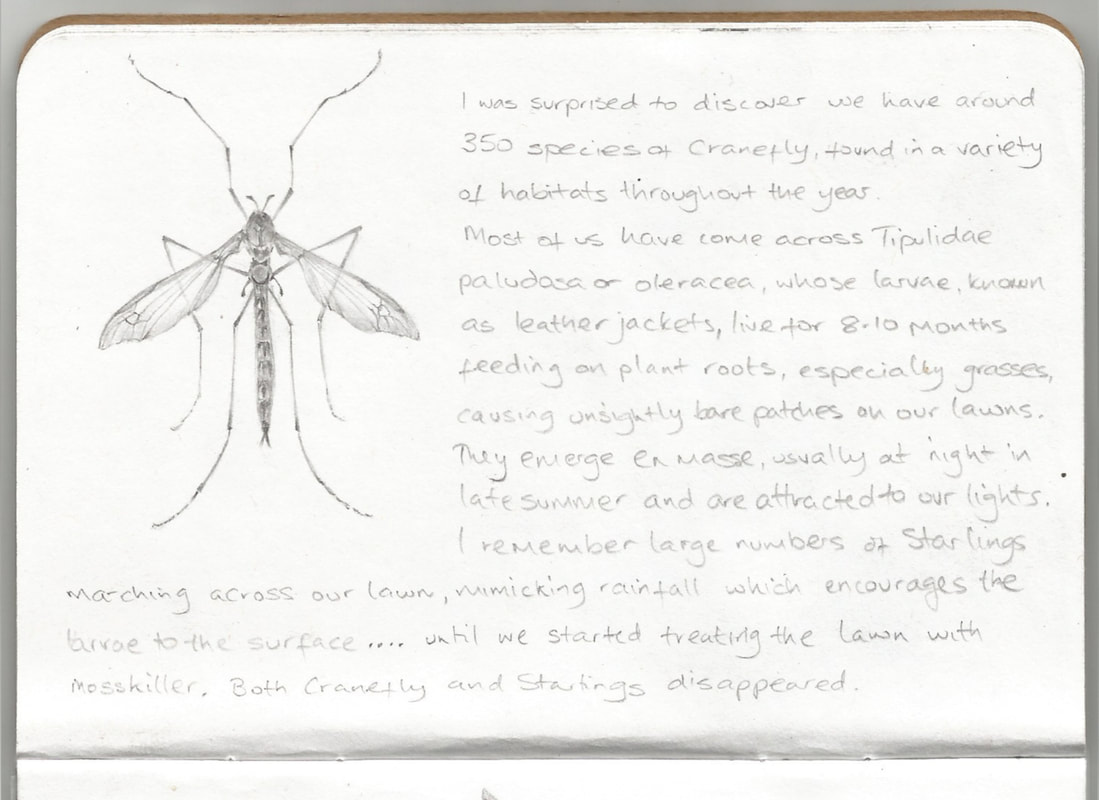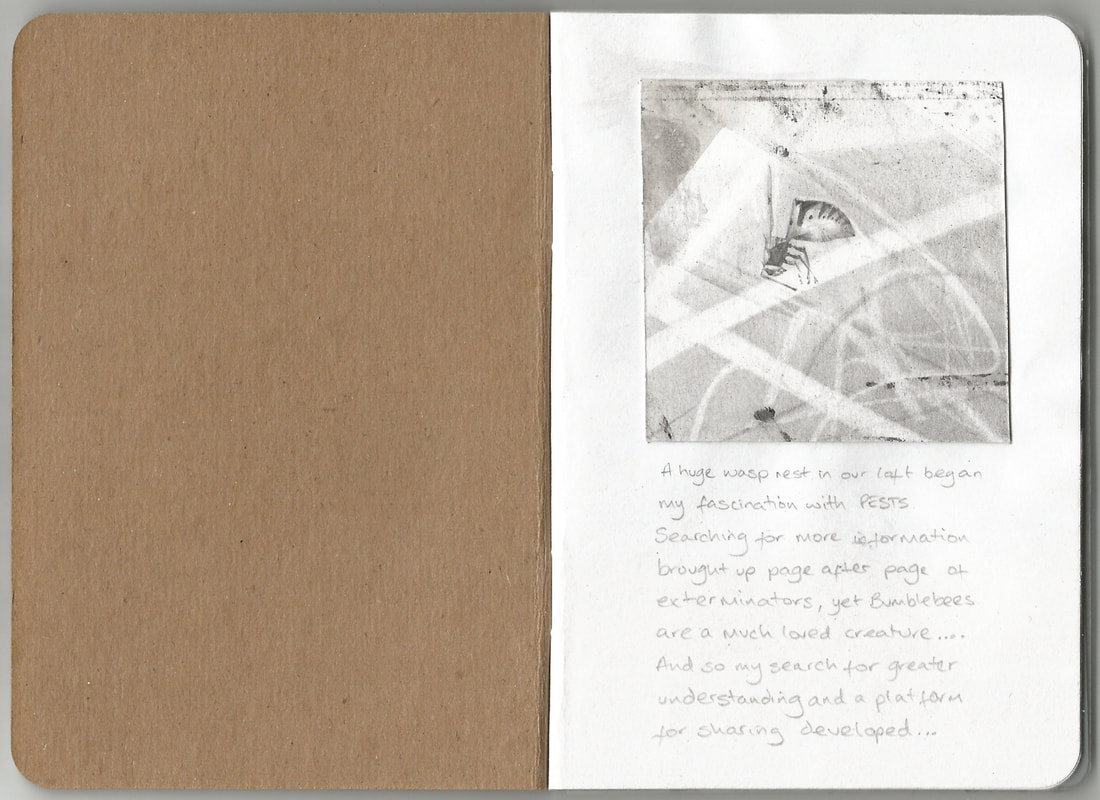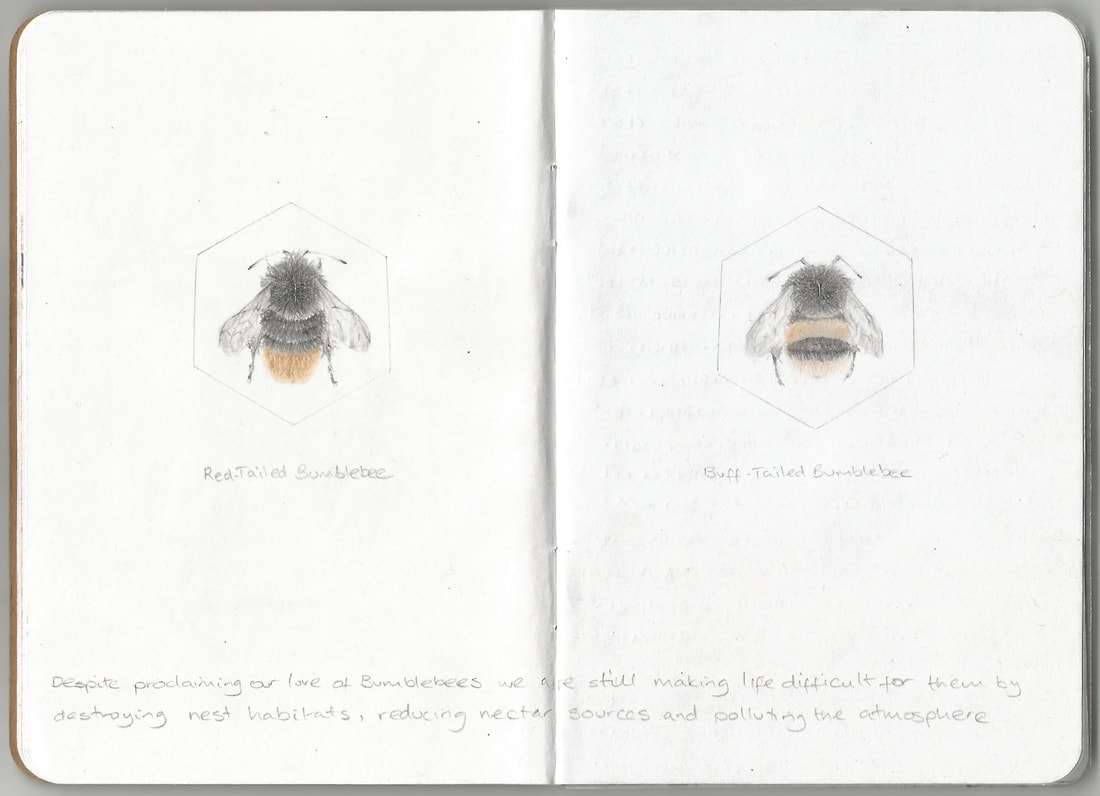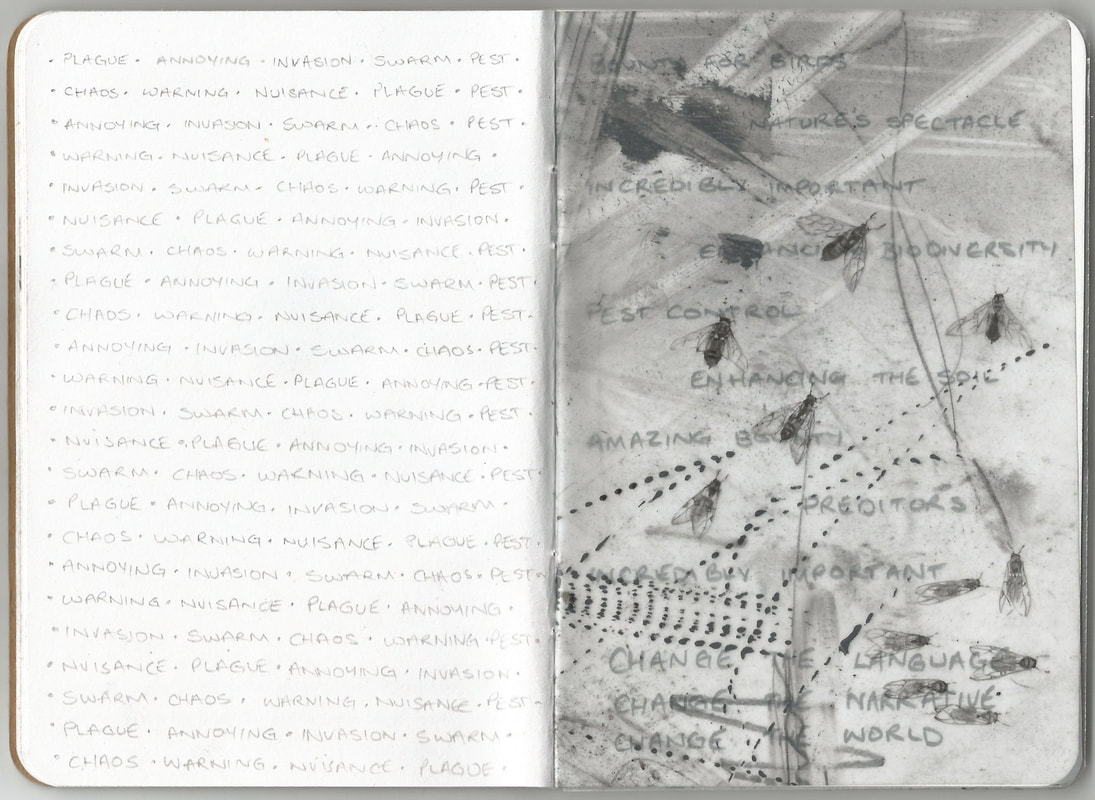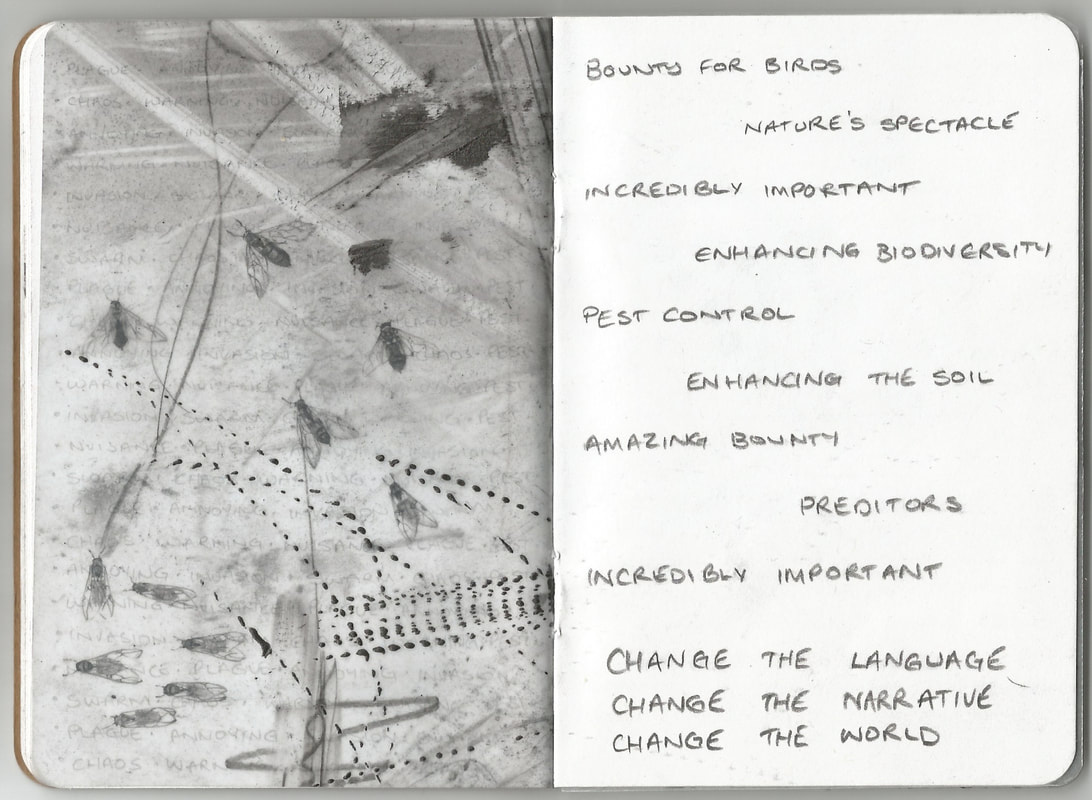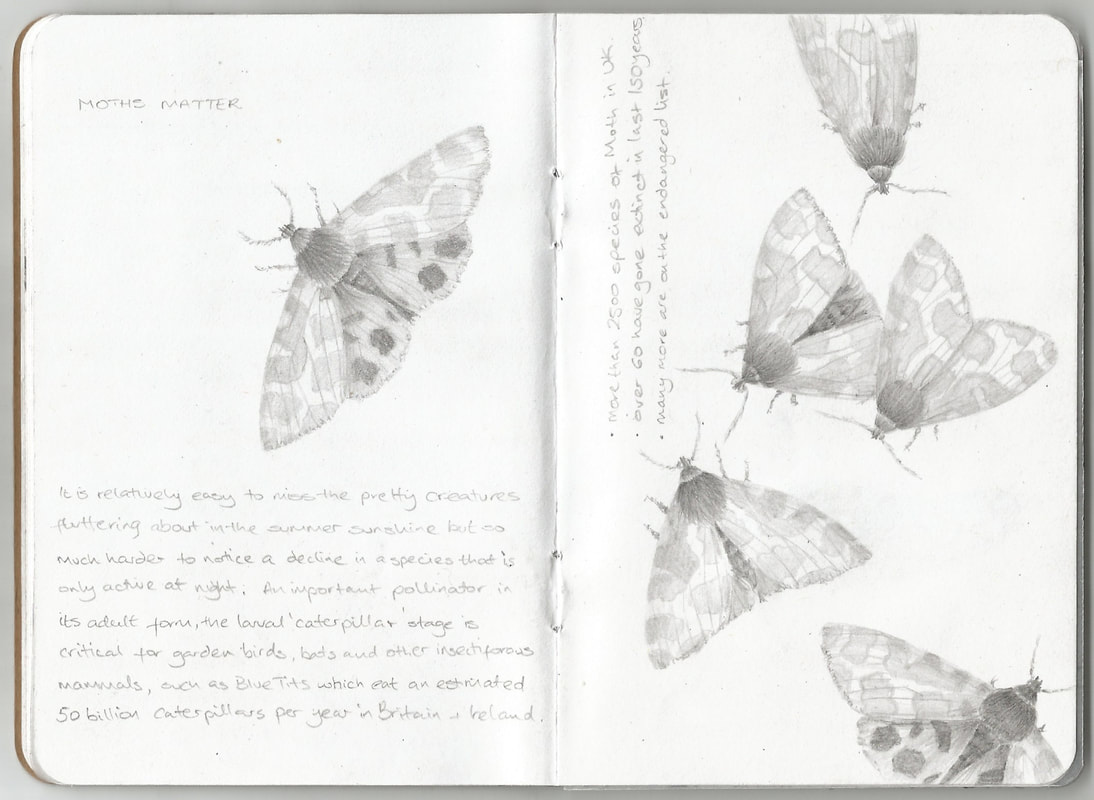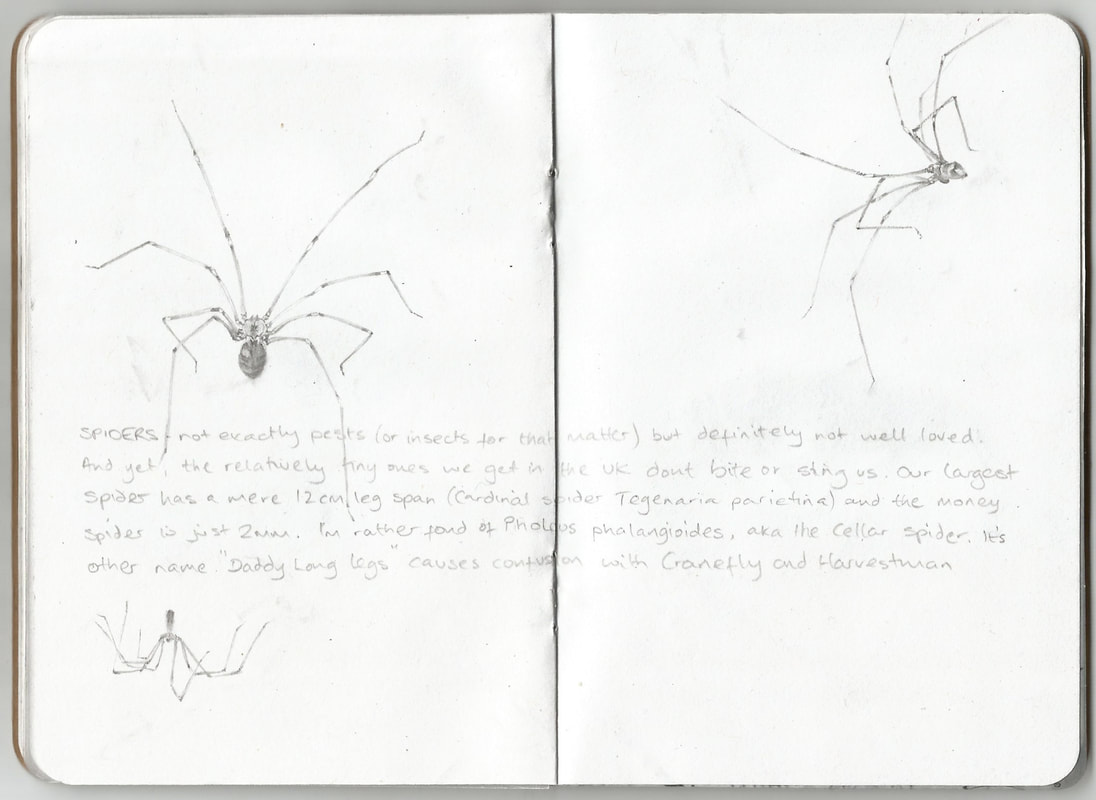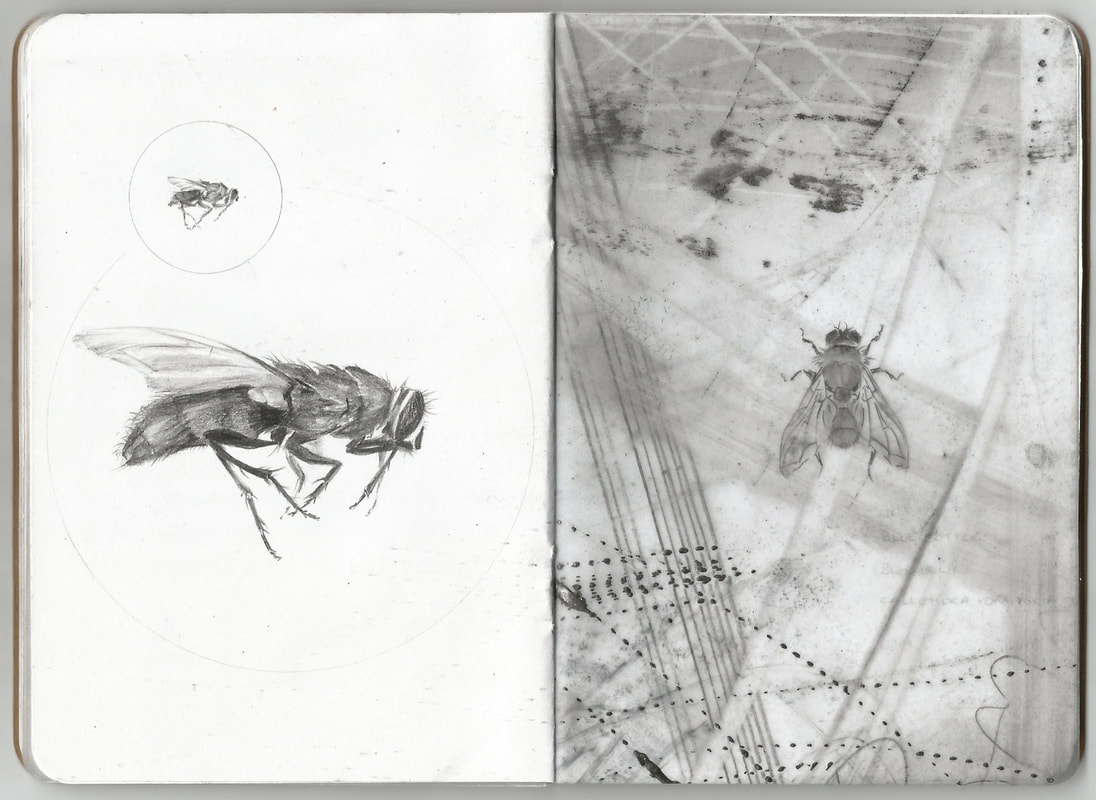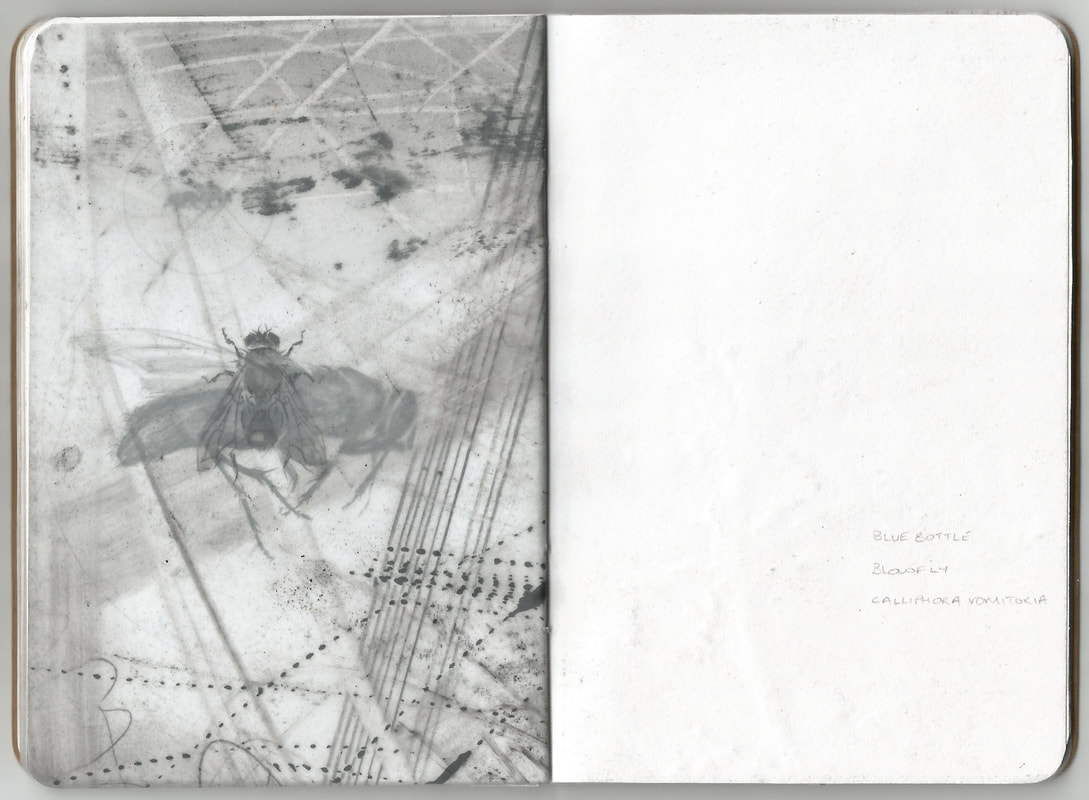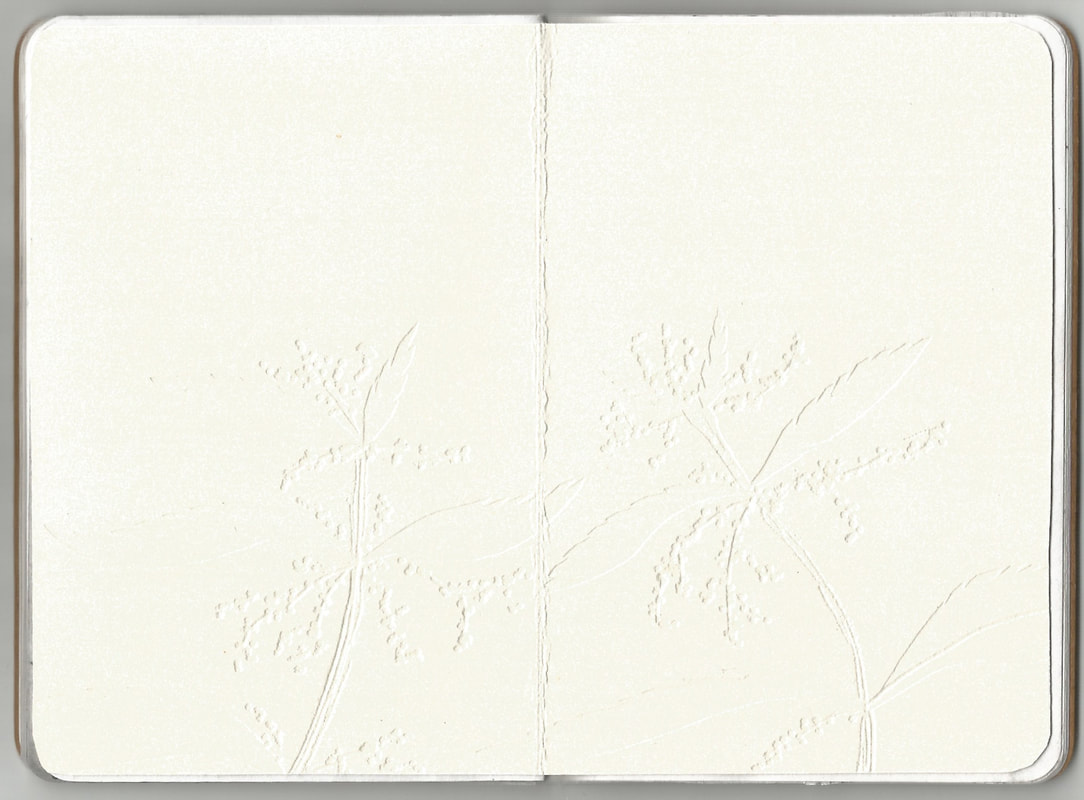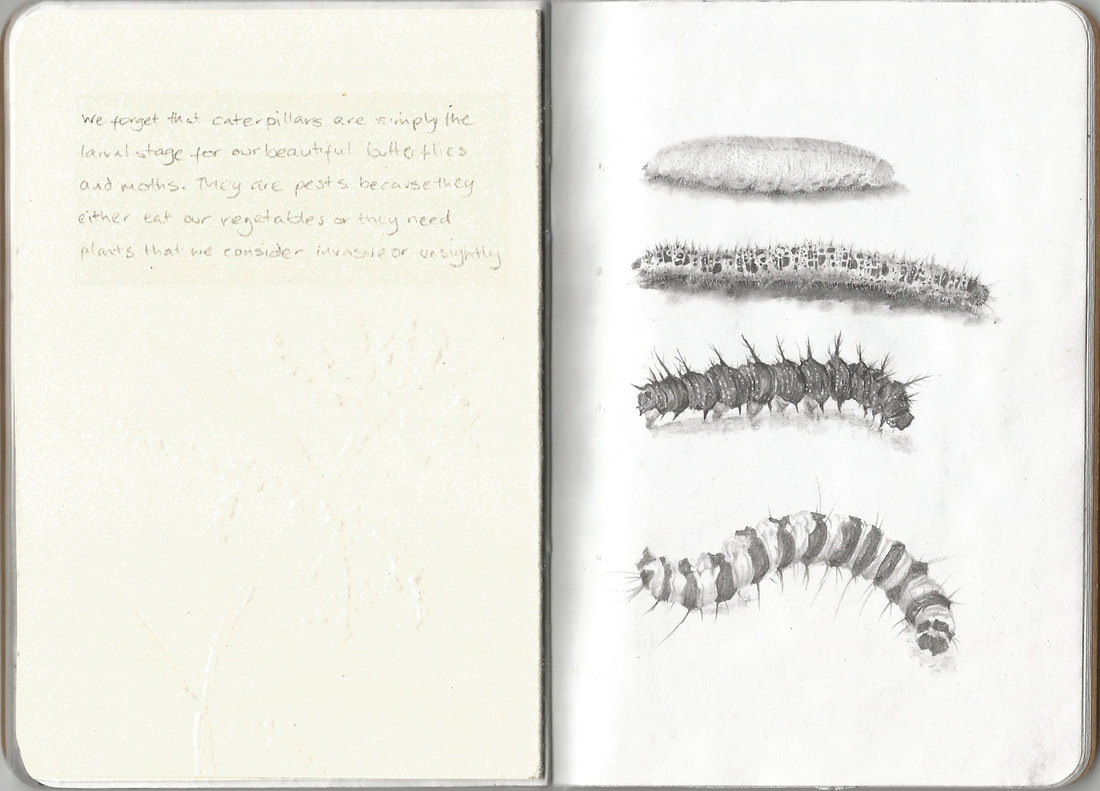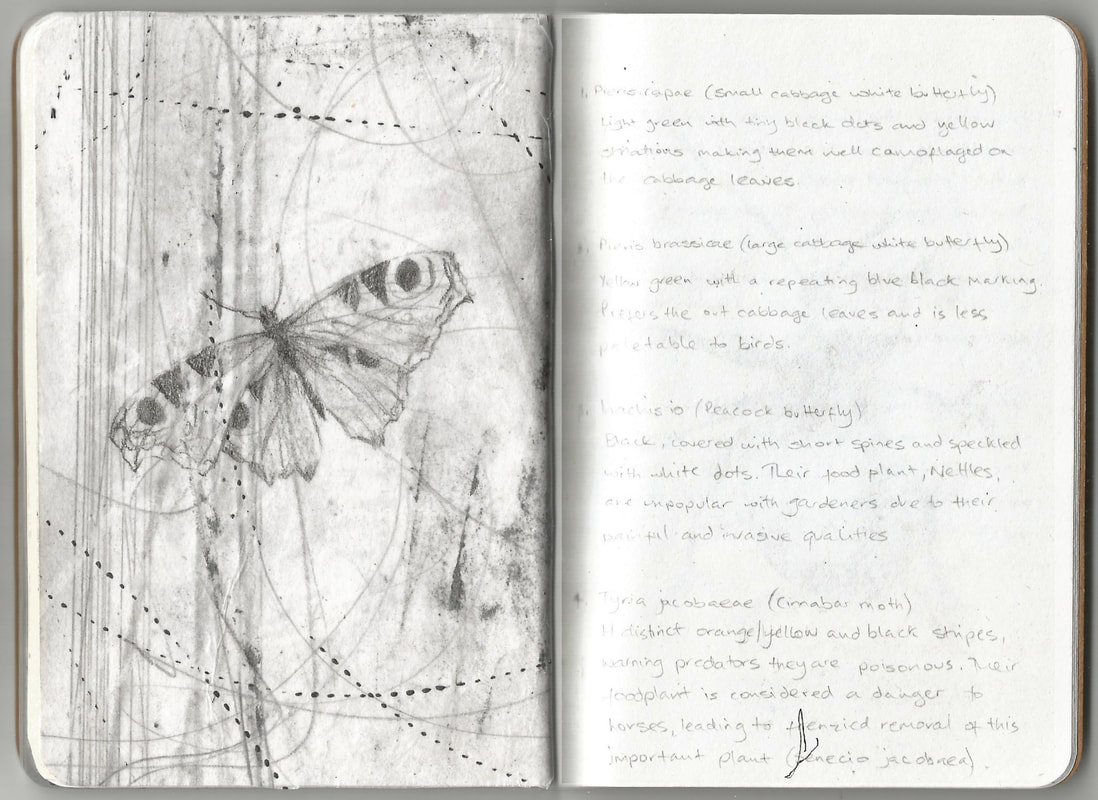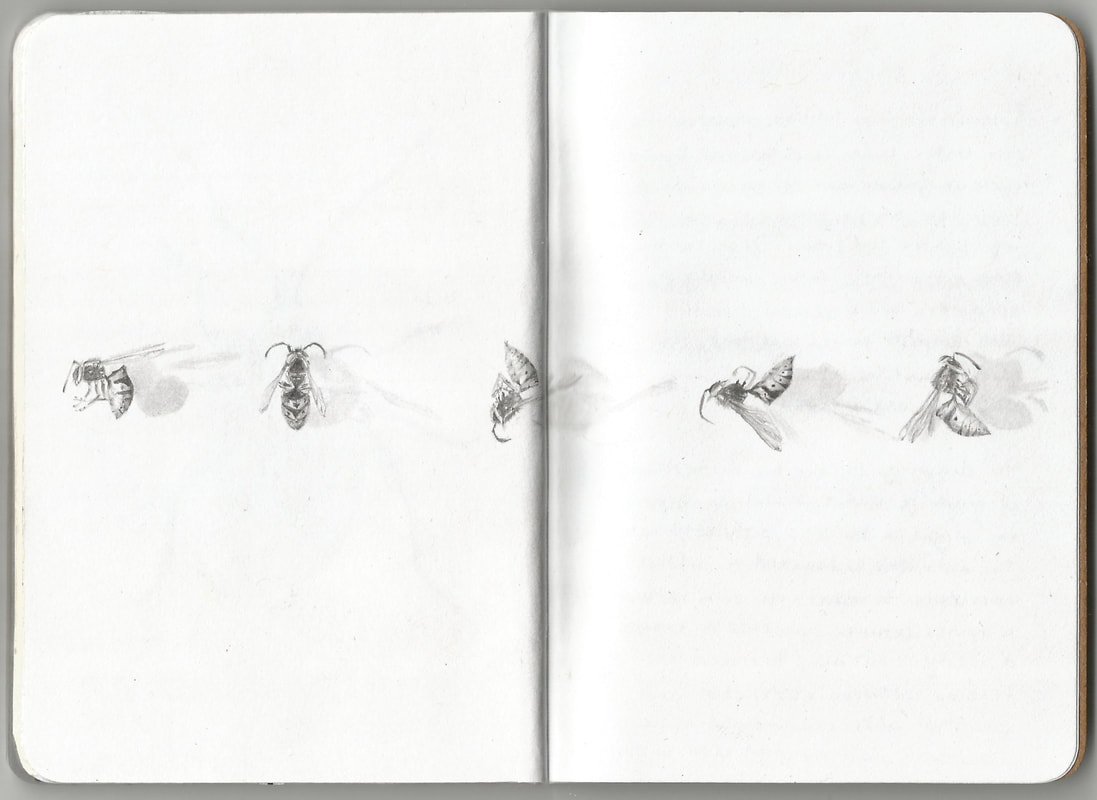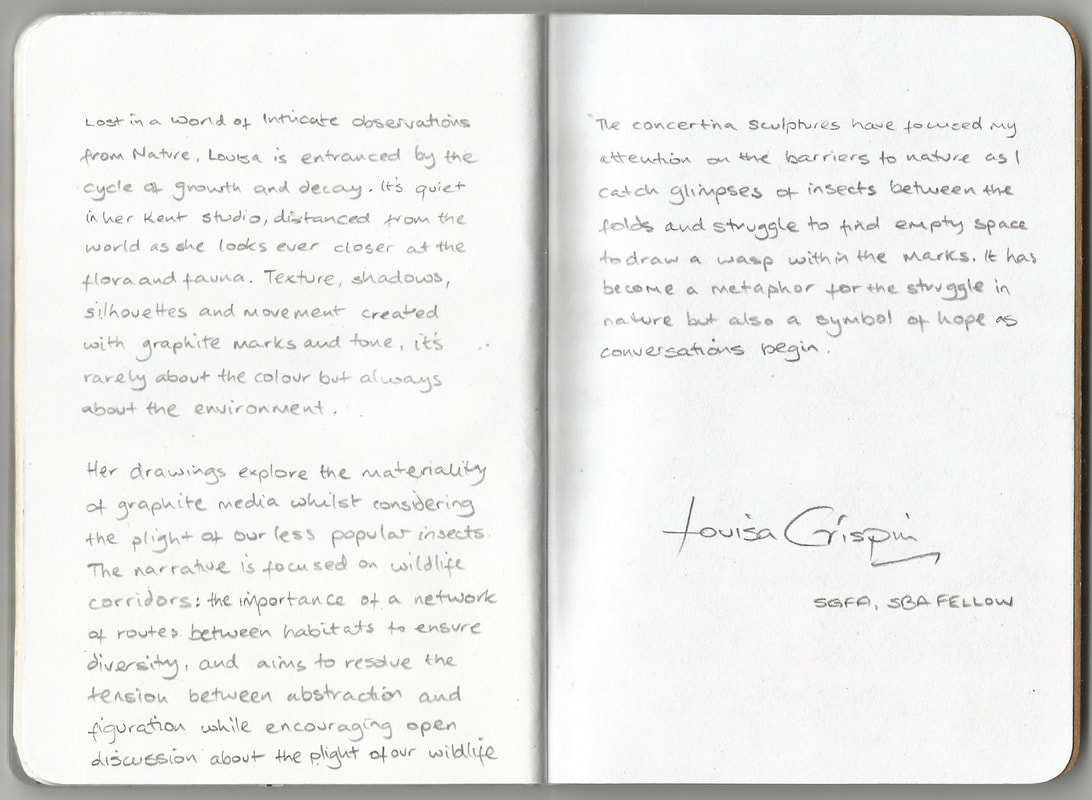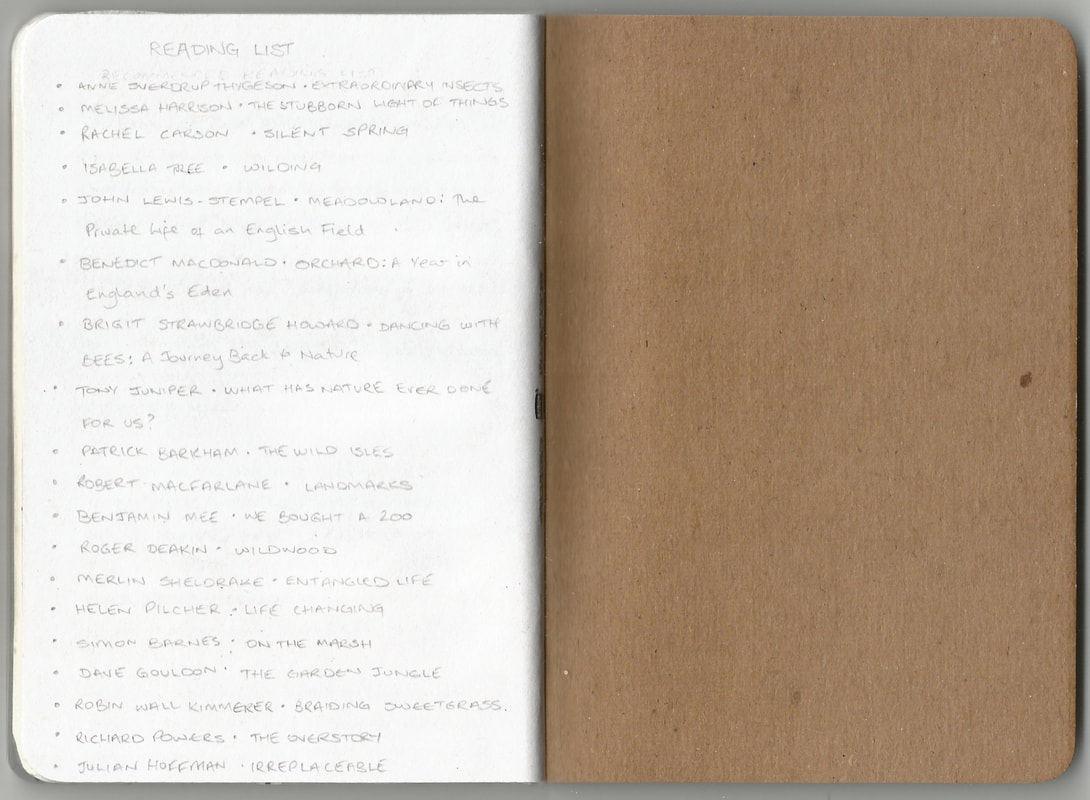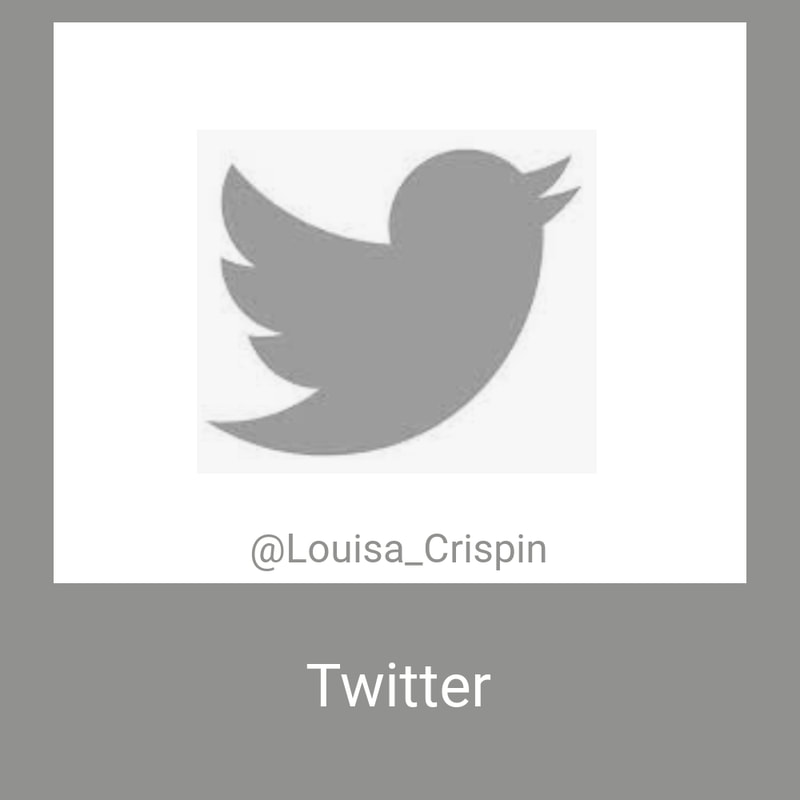I'm still not very good with sketchbooks but this is small (A6) and has a deadline which makes it feel achievable. I'm continuing my thoughts on "Pests" (although I didn't commit to the cover until I was a long way into the book.) It's a strange thought, to know that this book will not be reopened until 2072. Even stranger to think that it is unlikely I will still be alive! Humans are actually pretty efficient at removing what we consider pests. Just look at the sparrows, turtle doves and birds of prey but that's probably because we are pretty efficient at removing most wildlife that gets in our way. While drawing I am listening to "Gone" by Michael Blencowe, highly recommended, hugely thought-provoking. I began on 12 July 2022, coinciding with preparing for the Big Butterfly Count in the UK. My plan was to highlight the insects that we actively dislike or simply don't consider important. Needless to say I didn't start on page 1. Cabbage White is one of the UK's most prolific butterflies. Either Large (Pieris brassicae) or Small (Pieris rapae), it regularly tops the Big Butterfly Count And it's considered a PEST The larvae (caterpillar) feed on brassica and are destroyed by farmers and gardners alike using chemicals damaging to the environment as a whole I wonder if they will exist in 2072 Cabbage White is one of the UK's most prolific butterflies and regularly tops the Big Butterfly Count, but it's numbers declined last year (2021). I spotted caterpillars on my purple sprouting this morning but they had gone by lunchtime - much needed food for the birds? This is a graphite pencil drawing exploring the structure of the wings..
I have seen a lesser stag beetle in my garden and I am changing my garden to include more rotting wood in the hope of encouraging more beetles. In the meantime these have been rubbed and drawn from specimens using graphite powder, pencil and fine eraser Ladybird, ladybird fly away home • Your house is on fire and your children are gone • All but one and her name is Ann • And she crept under the pudding pan
A nursery rhyme from my childhood that now makes so much more sense. I have begun to realise that many of my childhood story books were giving messages about nature. The Very Hungry Caterpillar by Eric Carle taught us the life cycle of a butterfly in such a beautiful way at the same time as being a metaphor for human development, consumerism and progress. Did these messages reach me and inform my thinking today? I made a cardboard template for the ladybird wings.
They emerge en masse, usually at night in late summer and are attracted to our lights. I remember large numbers of Starlings marching across our lawn, mimicking rainfall which encourages the larvae to the surface .... until we started treating the lawn with mosskiller. Both Cranefly and Starlings disappeared. We no longer use chemicals. Numbers are starting to increase. Once a very common bird, Starlings were added to the Red List in 2021. A real lesson in food chains, cause and effect of seemingly unrelated chemicals. I remember late summer a few years ago a strange noise in the sky as a solitary bird flew in circles. I suddenly realised it was a single Starling, creating a lonely murmuration. A sad and poignant moment for me but thankfully their numbers are now recovering and I get to hear the strange clicking, whistling and crackling from the chimney more often now. Starlings are great mimics and I find their antics always make me smile. Craneflies have become a bit of an obsession for me in 2022. I love the wing patterns and the gangling legs, they just dance off the pencil. Who knew there were so many different types! These drawings were largely made with the Strathmore 2H pencil with an incredibly sharp point. About now, I went back to page 1 ... to tell the beginning of my story A huge wasp nest in our loft began my fascination with PESTS. Searching for more information brought up page after page of exterminators, yet Bumblebees are a much loved creature.... And so my search for greater understanding and a platform for sharing developed .... Despite proclaiming our love of Bumblebees we are still making life difficult for them by destroying nest habitats, reducing nectar sources and polluting the atmosphere Bumblebees are social insects, raising their young collectively often in old mouse nests or tufts of long grass. They then compete with other insects (including Honey Bees) for nectar and pollen to feed themselves and the larvae. Solitary bees - over 200 specialist bees that provision a nest hole and lay single eggs that will hatch out long after the parent is dead. Many require bare patches of ground or holes in wood to lay their eggs. I have lots of holes in any wooden post in my garden and you can buy or make your own bee house for this purpose. For a few weeks each year, if you are walking at the right time, you will notice lots of bees digging holes along a path at Rye Harbour Nature Reserve. The rest of the year you will simply walk over them completely unaware of the eggs waiting to hatch the following spring. I've just realised that I didn't include a BeeFly in the book. These are gorgeous bundles of fluff, with a long snout and a random darting movement, often feeding on Primroses. They ping their eggs into Bee nests where the beefly larvae feed on the bee larvae and their provisions. PLAGUE • ANNOYING • INVASION • SWARM • CHAOS • WARNING • NUISANCE • PEST Our language surrounding insects is challenging and it's time to change the narrative: Bounty for Birds • Nature's Spectacle • Incredibly important • Enhancing Biodiversity • Pest Control • Enhancing the Soil • Amazing Bounty • Preditors • Incredibly Important These are flying ants. When conditions are just right the new males and queens leave the nest at the same time, flying away to find a mate from a different nest. Research has shown that there is no single "flying ant day" but whenever the temperature is above above 13C and when the wind speed is less than 6.3 metres per second you will find ants flying somewhere. Sometimes the quantities flying will be enough to be recorded by the Met Office "9 Jul 2021 — Flying Ant day is nearly here - Met Office radar picks up swarms over Berkshire." This mass event is a tactic to avoid predators, hopefully ensuring that some succeed in finding a mate and making a nest. The Ants are harmless and the swarm rarely lasts more than an hour - just close any windows in the vicinity! In 2021 I noticed that several nests swarmed a few days after the Swifts left on migration. Such a shame they missed this opportunity to feed up before their long journey. I was testing out drawing on Polydraw Drafting Film. It has enough tooth to accept the graphite but I found it hard to capture detail and differentiate the tones.. I love the translucent effect. MOTHS MATTER It is relatively easy to miss the pretty creatures fluttering about in the summer sunshine but so much harder to notice a decline in species that is only active at night. An important pollinator in its adult form, the larval 'caterpillar' stage is critical for garden birds, bats and other insectiforous mammals, such as Blue Tits, which eat an estimated 50 billion caterpillars per year in Britain & Ireland • more than 2500 species of moth in the UK • over 60 have gone extinct in the last 150 years • many more are on the endangered list Very few of these 2500 species eat our clothes! I'm still struggling to love a slug but even the Royal Horticultural Society are now recognising their role in biodiversity as they eat decomposing vegetation and are food for birds and mammals (especially hedgehogs) • A slug may have up to 27,000 teeth • Snails are slugs with houses • We have 44 recognised species of slug and only 9 eat garden plants SPIDERS - not exactly pests (or insects for that matter) but definitely not well loved. And yet, the relatively tiny ones we get in the UK don't bite or sting us. Our largest spider has a mere 12 cm leg span (Cardinal spider Tegenaria parietina) and the Money spider is just 2mm. I'm rather fond of Pholous phalangioides, aka the Cellar spider. It's other name "Daddy Long Legs" causes confusion with Cranefly and Harvestman Have you looked closely at a fly? We forget that caterpillars are simply the larval stage for our beautiful butterflies and moths. They are pests because they either eat our vegetables or they need plants that we consider invasive or unsightly I often use embossing in my work to represent loss - ghost-like, hidden, missing, just a memory. Nettles are immensely important to wildlife, especially some of our favourite butterflies, but their invasive qualities mean we dig them out from our gardens or relegate them to areas which are less attractive to the insects. Ivy has a similar bad rep, yet it is such an important habitat, providing nest sites, overwinter roosts and autumn flowers for pollen, nectar and berries at a time when food is scarce for birds and insects. Take a moment to search for caterpillars and see the beautiful variety of approaches taken to protect themselves from predators.
I'm pretty sure the Clangers were modelled on Weevils. I love the antennae balanced on their elongated snouts. There are approximately 97,000 species described worldwide, generally herbivores and some considered a major pest of plants (which we have used at times to deter invasive flora in sensitive areas). The larvae are fat, white, legless comma-shaped creatures. I have found Vine Weevil larvae to be a popular feast for Blackbirds when I have tipped them out of my garden pots in Spring. Vine Weevil, Otiorhynchus sulcatus And the drawings finish as they began, with the humble wasp. They were the beginning of my close inspection of insects that we dislike. The reactions to my artwork prompted me to learn more about them and try to understand why many people have such an intense negative reaction to them. I am still trying to fully understand but I hope I have encouraged a few to look a little closer, to understand why they are attracted to our food in August and how we can live in tandem. The sketchbook concludes with a little bit about me and a bibliography of audiobooks that have kept me company while drawing over the last few years. I find the gentle readings help to find the zone of observational drawing while also helping me to learn more about our natural world. I was going to highlight a few of these but in the end it was difficult to just select one or two. Caring for nature is complex, lots of subtle nuances and it's difficult to remain hopeful in our current situation. Some of these books are gentle diary type reads and others are fun as well as informative. All are worth a try but Rachel Carson comes with a warning - Silent Spring is a life changing book, a really hard read which had me in tears BUT so so important. I believe it should be on the school curriculum. While creating this sketchbook I was mostly listening to GONE by Michael Blencowe, and I've just realised I missed it off the list!!!!! I've also realised I need to hear it again. The time came to send the book away. I cannot emphasise the wrench enough - I find it hard to part with any of my drawings and the knowledge that this one will be locked away until after my death is incredibly hard for me. I consider myself a collector, a much kinder word than a hoarder (I don't keep piles of waste but much of what I collect would seem strange to most people). An artist friend changed the narrative - how wonderful to guarantee that at least one person will see my artwork after my death. It has been a rewarding project in so many ways: the quiet drawing time, the productive thinking. Postscript : The book came back! On closer inspection I had written the address incorrectly and the postmen in America are obviously not as dedicated as those here in the UK. I think I should keep it now #serendipidy
0 Comments
Your comment will be posted after it is approved.
Leave a Reply. |
Studio BlogWhen there's something happening in the studio you might like to know. If you would like irregular email updates for this blog and/or my Nature Diary or FlightPath Project, you can sign up here:
Archives
January 2024
Categories
All
|
Louisa Crispin
|
Oak Cottage, Talbot Road,
Hawkhurst Kent TN18 4LU (UK) |
|

